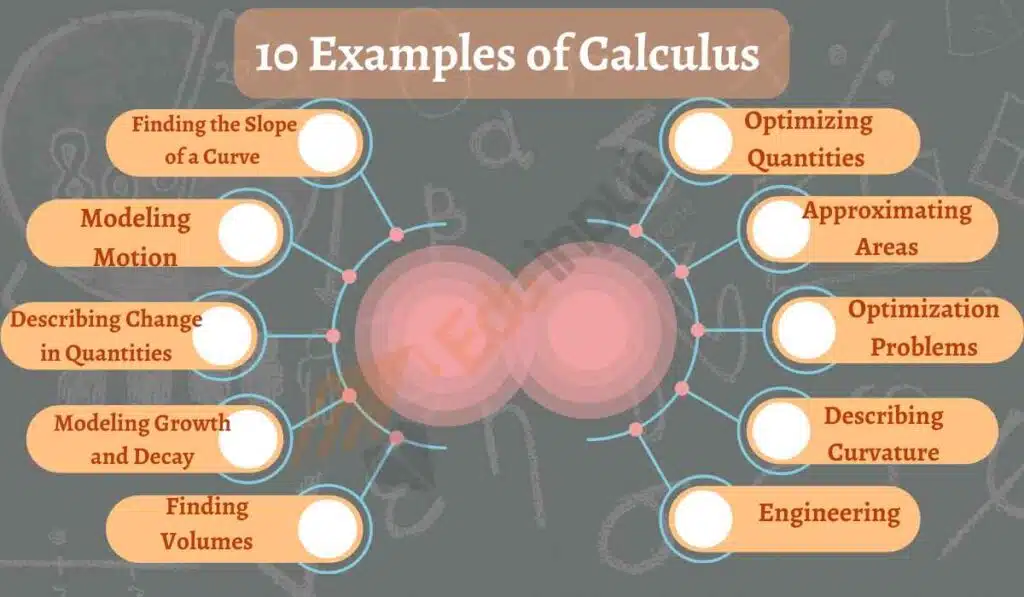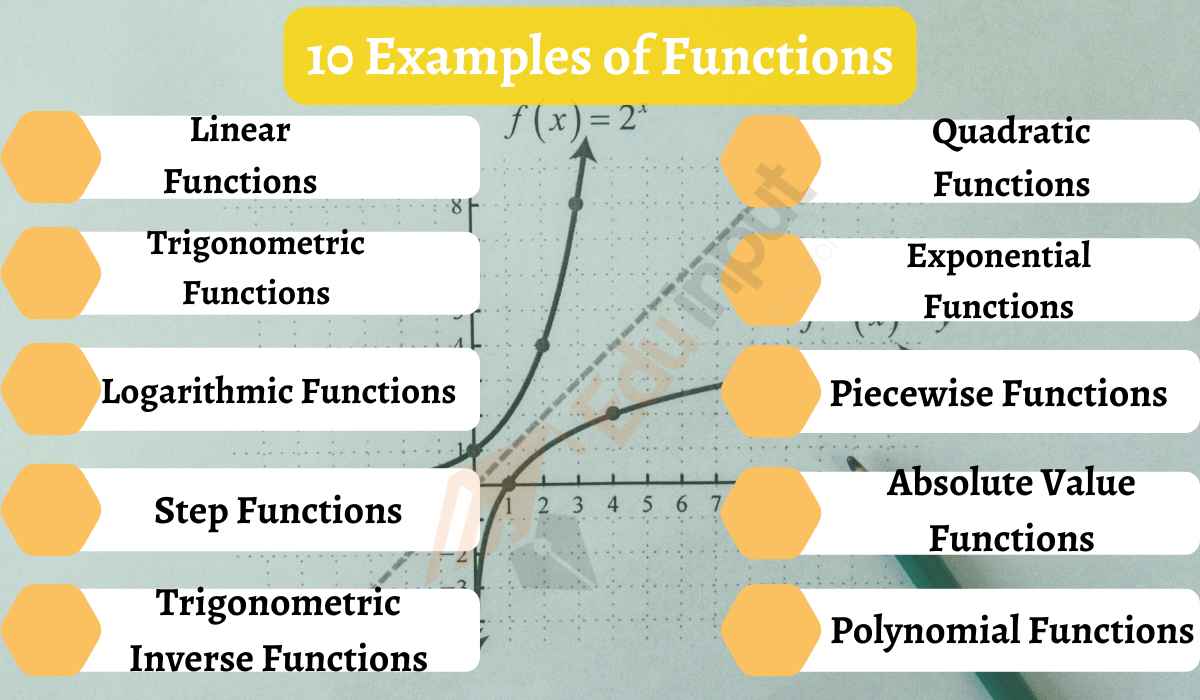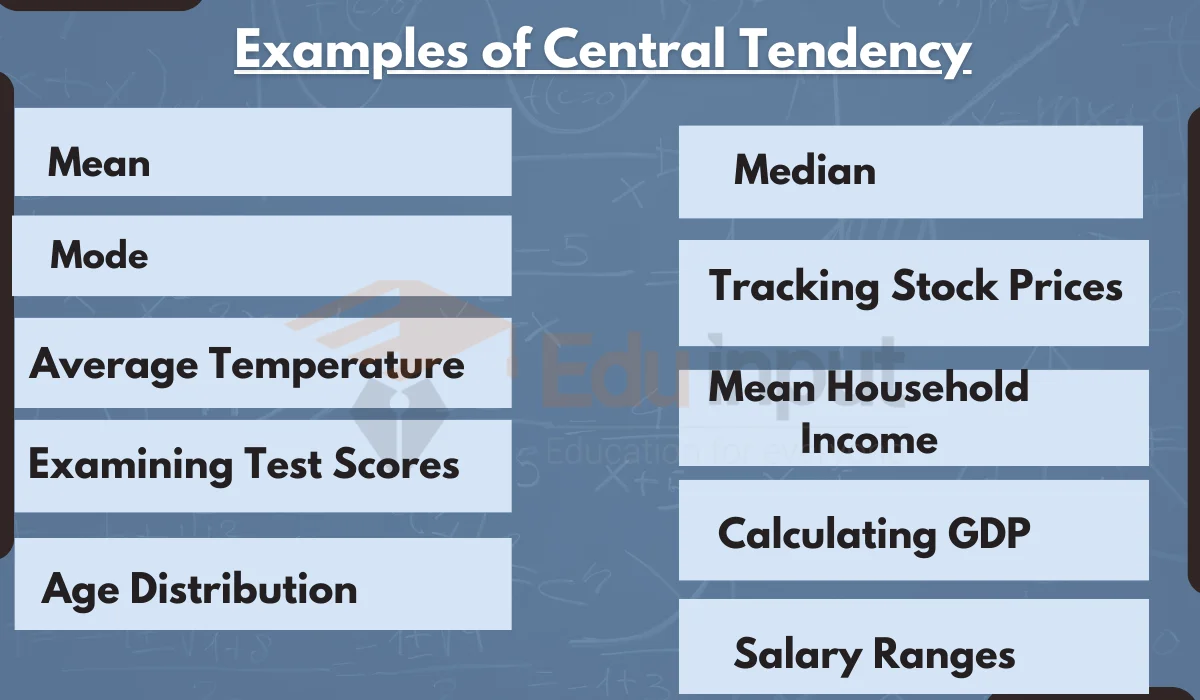10 Examples of Calculus
Calculus is a branch of mathematics that studies continuous change. There are two main branches of calculus,
Differential calculus
Integral calculus
Calculus has many applications in science, engineering, economics, and other field.
Here are 10 Examples of Calculus how it is used in mathematics.

Examples of Calculus
1: Finding the Slope of a Curve
Calculus is used to find the slop of curve. By applying the principles of differential calculus and finding the derivative of the curve’s equation, we can figure out the slope at any point on the curve.
This process helps us examine the shape and characteristics of the curve..
2: Optimizing Quantities
Calculus can be used to find the maximum and minimum values of a function.
By taking the derivative and setting it equal to zero, we can identify the critical points where the function changes from increasing to decreasing or vice versa.
This allows us to optimize quantities and find ideal values to maximize profit, minimize cost, etc.
3: Modeling Motion
The position, velocity, and acceleration of objects can be modeled using calculus.
Derivatives with respect to time represent velocity, and derivatives of velocity represent acceleration.
This allows detailed analysis of an object’s motion under the influence of forces.
4: Approximating Areas
Finding the exact area under a curve can be difficult, but calculus provides tools to approximate areas.
Techniques like Riemann Sums and Integration allow us to estimate areas by dividing them into tiny segments and adding them up.
This has applications in numerous fields, from physics to economics
5: Describing Change in Quantities
Calculus is ideal for modeling how a quantity changes over time.
The derivative describes the rate of change, while integration adds up the changes over an interval.
This makes calculus a powerful tool for understanding dynamic systems in physics, engineering, biology, and other sciences.
6: Optimization Problems
Many real-world applications require optimizing a quantity to maximize or minimize it.
Business applications like maximizing profit or minimizing costs depend on calculus.
7: Modeling Growth and Decay
The exponential growth and decay of quantities can be modeled using differential equations.
Calculus provides the tools to analyze exponential models for population, radioactive decay, or compound interest.
8: Describing Curvature
The curvature of a shape measures how sharply it bends at a point.
In calculus, the second derivative can determine concavity and inflection points where the curvature changes.
9: Finding Volumes
Calculus can be used to find the volume of solids with curved surfaces.
Techniques like disc and shell methods from integral calculus allow calculating volumes by slicing the solid into many discs/cylinders and adding them up.
10: Numerous Applications in Science/Engineering
Calculus has a remarkable ability to accurately model real-world phenomena.
It is applied in a vast number of scientific and engineering fields from fluid mechanics, thermodynamics. Virtually any field that studies dynamics and change utilizes calculus extensively.
Calculus powerful branch of mathematics with an wide range of applications. This makes calculus an essential mathematical tool for science, engineering, economics, and more advanced mathematics.







Leave a Reply